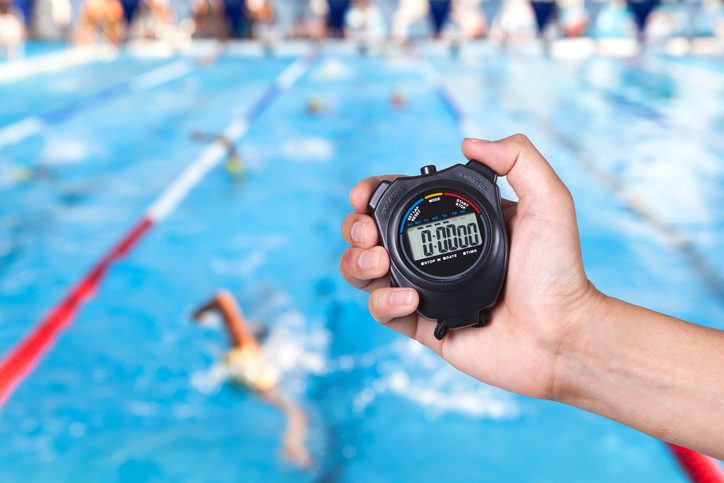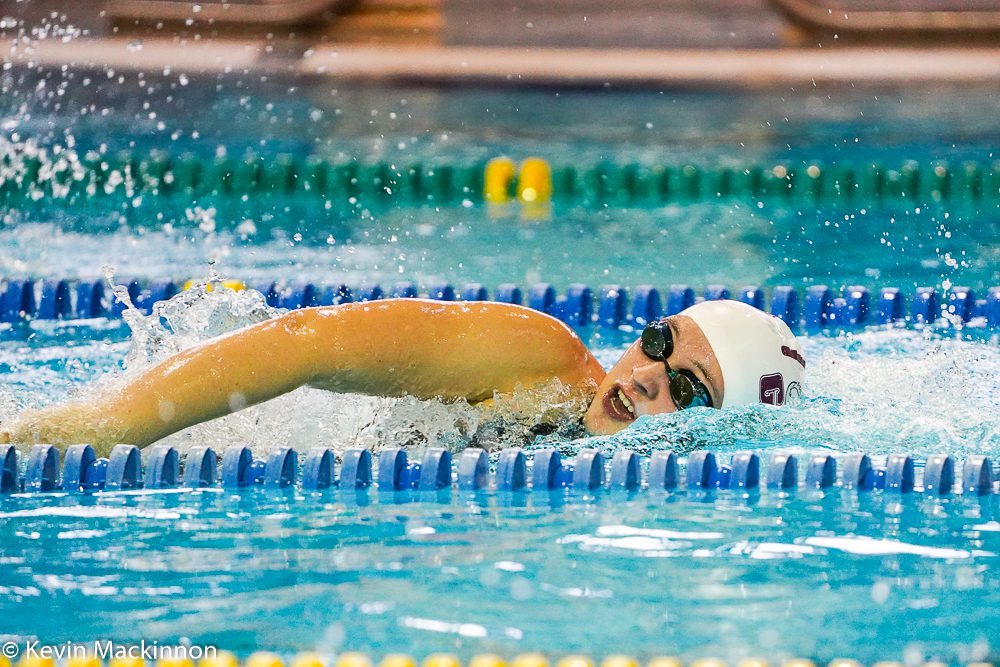Get faster in the water with these simple swim sets
When it comes to swimming faster, variety isn't always better!
 Photo by:
Getty Images
Photo by:
Getty Images
“There’s too much writing in this workout.” Petr Schmidt
I worked for a short time with a swim coach 20 years ago who practically wrote a novel on the board for every workout. There was lots of complex stuff – lots of “new and exciting” drills and sets with so many variables he required a white board the size of a Cadillac to get them all down.[Text Wrapping Break] After those workouts I can remember thinking “there was no swimming in that swim.”
Triathlon Canada’s head coach, Marc-Antoine Christin, feels a swim workout should be simple enough that it doesn’t need to be written on a board and I’ve heard Joel Filliol say the same. You don’t need a white board to remember, 40 x 100 @ 1:20.
“Boring training makes great athletes,” or “variety is the spice of a weak mind” are two things you’ll hear me say with some frequency while standing before athletes. I honestly don’t know where I first heard it. (That’s what happens when you get old.) I think it might have been two-time Ironman world champion Chris McCormack.

When coaches fail to repeat workouts and take a lot of pride in writing a “brand new” session every time you come to the pool, I believe they’re failing to remember just what most of us are doing there – trying to get faster. When you show up at the track and see the workout, no one thinks “Oh darn – 10 x 400 again,” or “What? Five times a 1 km – we did that 3 weeks ago!”
But there’s this culture in swimming that a session needs to be new and shiny every time. This is simply not true. Repeating, or progressing, workouts gives athletes the opportunity to master the set. This helps them strategize and helps build confidence. It gives the swimmer something to shoot for. You know what you did the last time – now let’s see what you can do this time.
So, when I talk about boring training, what I’m really talking about is simple training. When the gun goes off, you’ve got anywhere from 750 to 3,800 m of water in front of you, and that’s what your swim training should be preparing you for.
If you’re like most folks and you’ve an got an hour for your swim, a simple, basic main set will give you a better return on your training time than some complex set of instructions that requires you to be constantly calculating your leave time, while at the same time trying to figure out what your stroke and effort should be. “KISS” – Keep It Simple (you know the last word).
Here’s a simple eight-week progression of a basic 2,000 m main set for a half-distance race (1,900 m) that you could perform once a week. Here you’ll see the session isn’t exactly the same, there’s an obvious evolution, but they don’t come simpler. Trust me, this is an effective progression.
For all distances, shoot for race effort. You can adjust these sets easily to reflect fitness and skill level, and I don’t think there’s anything wrong with mixing in some pull/paddles as well.
You can also put in an easy aerobic week every two to three weeks to allow for some adaptation.
After the eight to 10 weeks, begin a taper and two weeks later, you race.
| Week 1 | 20 x 50 @ 10”
10 x 100 @ 15” |
| Week 2 | 20 x 100 @ 15” |
| Week 3 | 10 x 100 @ 10”
5 x 200 @ 20” |
| Week 4 | 10 x 200 @ 15” |
| Week 5 | 6 x 200 @ 15”
2 x 400 @ 30” |
| Week 6 | 5 x 400 @ 20” |
| Week 7 | 4 x 500 @ 30” |
| Week 8 | 2 x 1,000 @ 1’ |
It comes down to this: boring training makes good athletes, but the truth is “boring” training shouldn’t actually be boring. Not if your goal is to become a better swimmer and a better athlete. Embrace simplicity and work on the basics. Learn those basics, then repeat them frequently with intention and purpose. This will beat the pants off “shiny and new” every time.
Clint Lien is the head coach of Mercury Rising Triathlon www.mercuryrisingtriathlon.com and the assistant NPC coach for Triathlon Canada.
